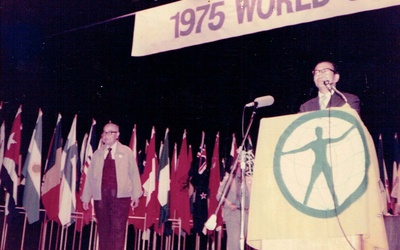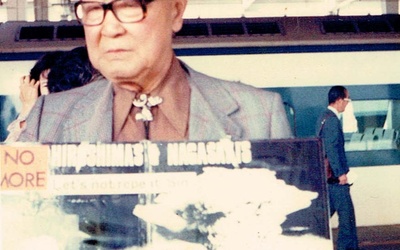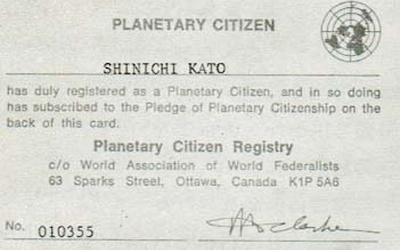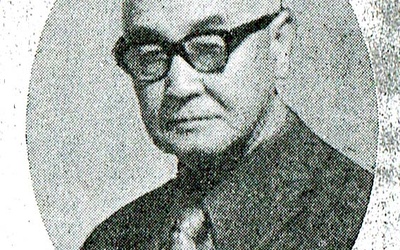The man who collected the records of the first generation: Following in the footsteps of Shinichi Kato

Around 1960, Kato Shinichi drove around the US, visiting the footsteps of the first generation of Japanese immigrants and compiling the results in "A Hundred Years of Japanese Americans in the US: A Record of Their Development." Born in Hiroshima, he moved to California and became a journalist in both Japan and the US around the time of the Pacific War. Although he escaped the atomic bombing, he lost his younger brother and sister, and in his later years he devoted himself to the peace movement. We follow the energetic path of his life, which spanned both Japan and the US.
Stories from this series

Episode 29 (final episode) End of the series
Jan. 28, 2022 • Ryusuke Kawai
For about a year, we have been following the life and achievements of Shinichi Kato, who was active in both Japan and the U.S. Born in Hiroshima in 1900 and dying in his hometown in 1982, Kato was a man of action who lived through the 20th century to the fullest, even as he endured the war. To reiterate, I became interested in Kato when I learned about "A Centennial History of Japanese Americans in the United States," which he …

The 28th Endless Journey for World Peace
Jan. 14, 2022 • Ryusuke Kawai
Write a letter to the UN Secretary-General Shinichi Kato, who traveled around the world calling for a "World Federation" and "Global Citizenship," attended the first Global Citizenship World Assembly held in San Francisco in July 1975. In January of the following year, he sent a letter to then UN Secretary-General Waldheim. This also shows the true character of Kato as an activist. The letter was sent from Hiroshima on January 20, 1976. The title of the letter is "PLEASE ASSIST …

Vol. 27 From Japan to the World
Dec. 24, 2021 • Ryusuke Kawai
It is often said that people visit Zenkoji Temple by being pulled by a cow, but this time I was able to visit the world's hidden gem, "Nepal." This was also thanks to a "global citizen" rather than a "cow." I have never had any interest in conventions that tend to end up being nothing more than festivals, such as those held in Ottawa, Canada, Brussels in Northern Europe, and other World Federation Conventions, but I went to the 16th …

Part 26: Becoming a Global Citizen
Dec. 10, 2021 • Ryusuke Kawai
From what I have gathered in Japan, the only people who have met Kato, who was born in 1900, are his nephew, Mr. Yoshida, and two others who live near his parents' home, and in the United States there is only one other person, the Hiroshima Prefectural Association in Los Angeles. While I was wondering if there was anyone who knew Kato among those involved in the peace movement in which he was actively involved in his later years, I …

25th Appeal for the Construction of a World Federation
Nov. 26, 2021 • Ryusuke Kawai
Kato Shinichi, a journalist of action, left behind few written works. I searched for "Kato Shinichi" in the "Peace Database" of the "Hiroshima Peace Memorial Museum" in my hometown of Hiroshima to see if there were any writings left by him. I found some of Kato's writings among his books and magazines. One of them is a publication called "Creating Peaceful Coexistence." It says, "Author: Edited by Shinichi Kato," "Publisher: Earth Friendship Association," "Published: December 20, 1971," and "Number of …

No. 24: Contributions to the Hiroshima North American Club
Nov. 12, 2021 • Ryusuke Kawai
I want to spend my final days in Japan During his second stay in America, Kato Shinichi compiled "A Centennial History of Japanese Americans in the United States" in 1961 as editor-in-chief of the New Japan America Newspaper Company, before leaving the company and returning to Japan in 1970. Looking back, Kato was born in Hiroshima in 1900, and was called to California by his father at the age of 18. He returned to Japan just after the outbreak of …


